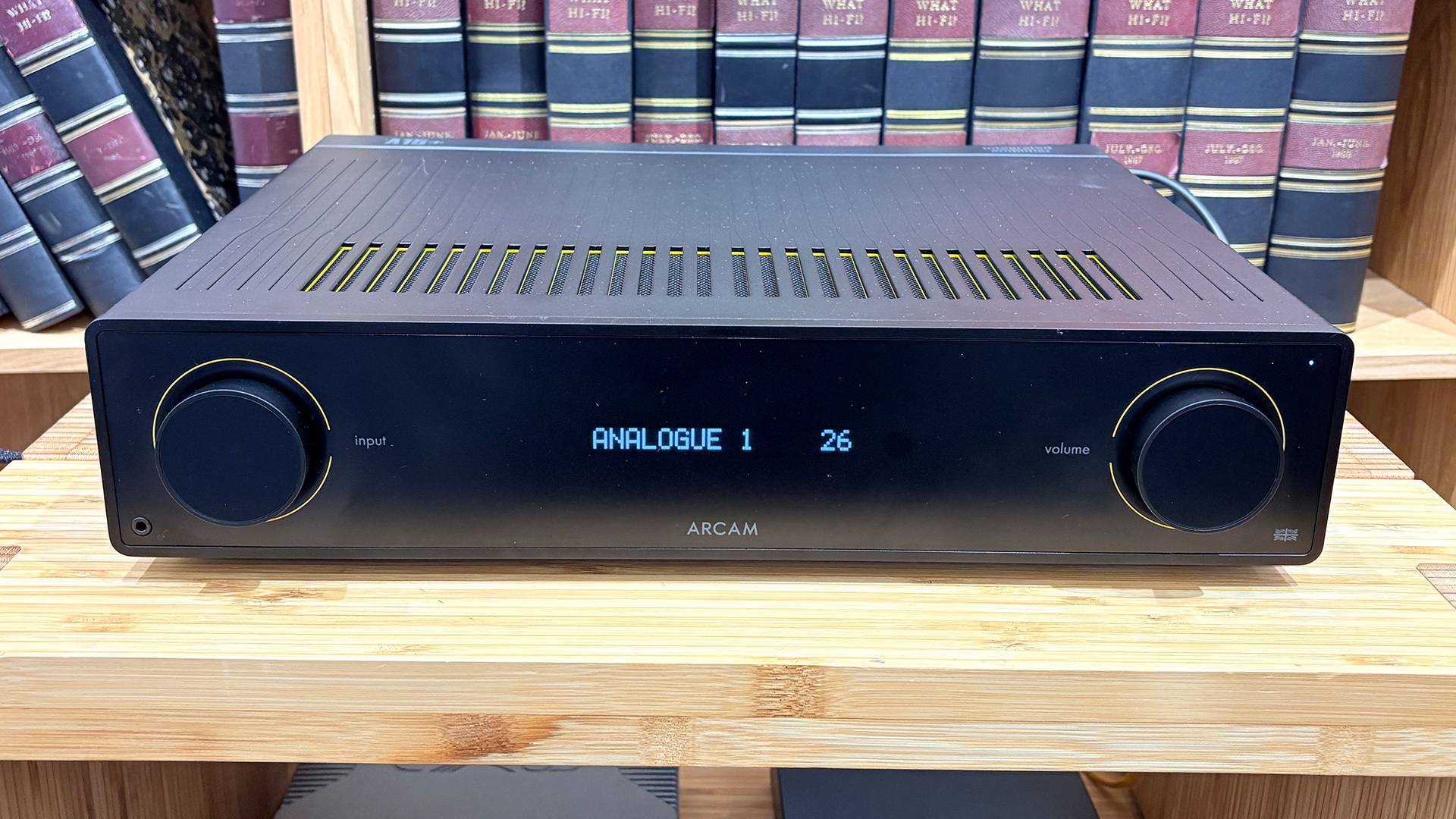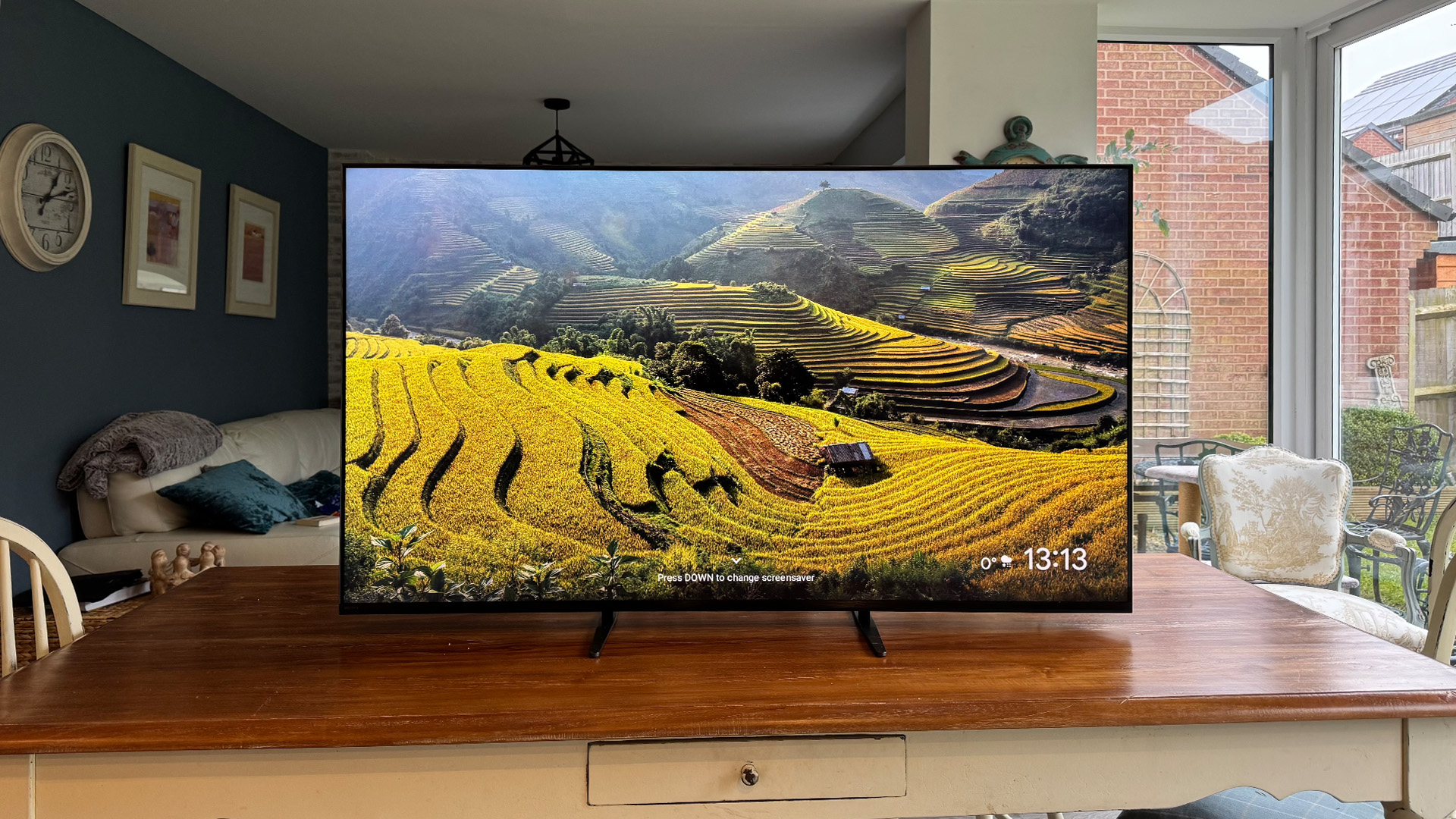What Hi-Fi? Verdict
Arcam’s bit of gentle fettling reinforces the A15+ amplifier's class-leading status
Pros
- +
Improved clarity and expression
- +
Comprehensive feature set
- +
Unfussy nature
Cons
- -
Still no USB input
- -
Frosted display lacks crispness
Why you can trust What Hi-Fi?
Arcam’s Radia range of stereo products was only introduced back in 2023. In these few short years, it has become something of a cornerstone of our affordable hi-fi recommendations. We have a particularly soft spot for the A5 and A15 integrated amplifiers, which both combine a comprehensive feature set with class-leading sound quality.
So, when we hear that the company is introducing upgraded versions of these amplifiers, we can’t wait to have a listen. We are focusing on the new Arcam A15+ here; the A5+ review will follow soon.
We shouldn’t get too carried away here as regards the scale of the upgrades. There have been no massive revisions or significant specification changes. Think of it as a gentle bit of fettling of an already accomplished product. How gentle? Without the badging, it would be hard to notice anything had changed, unless you listened, of course.
Build & features
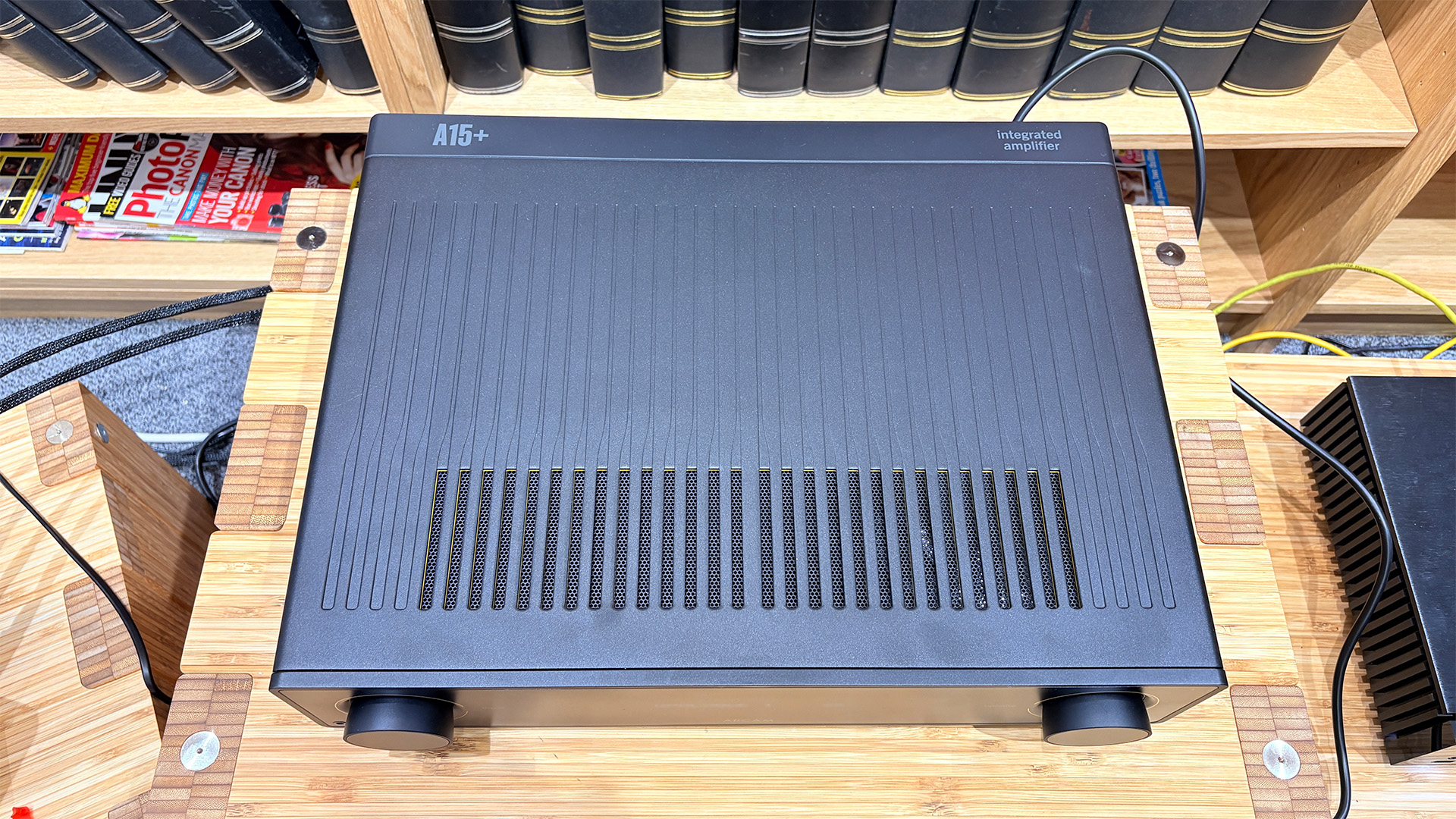
General build quality remains the same as for the previous generation; that is, solid and well finished. We still like the clean, modern look, though we now think that the two large control dials could feel a little more substantial and positive in use.
While the step-up A25+ model has been given a crisper display, that fitted to the A15+ remains frosted as before, and so could be sharper. The partnering remote is a simple, plastic affair that does the job well enough.
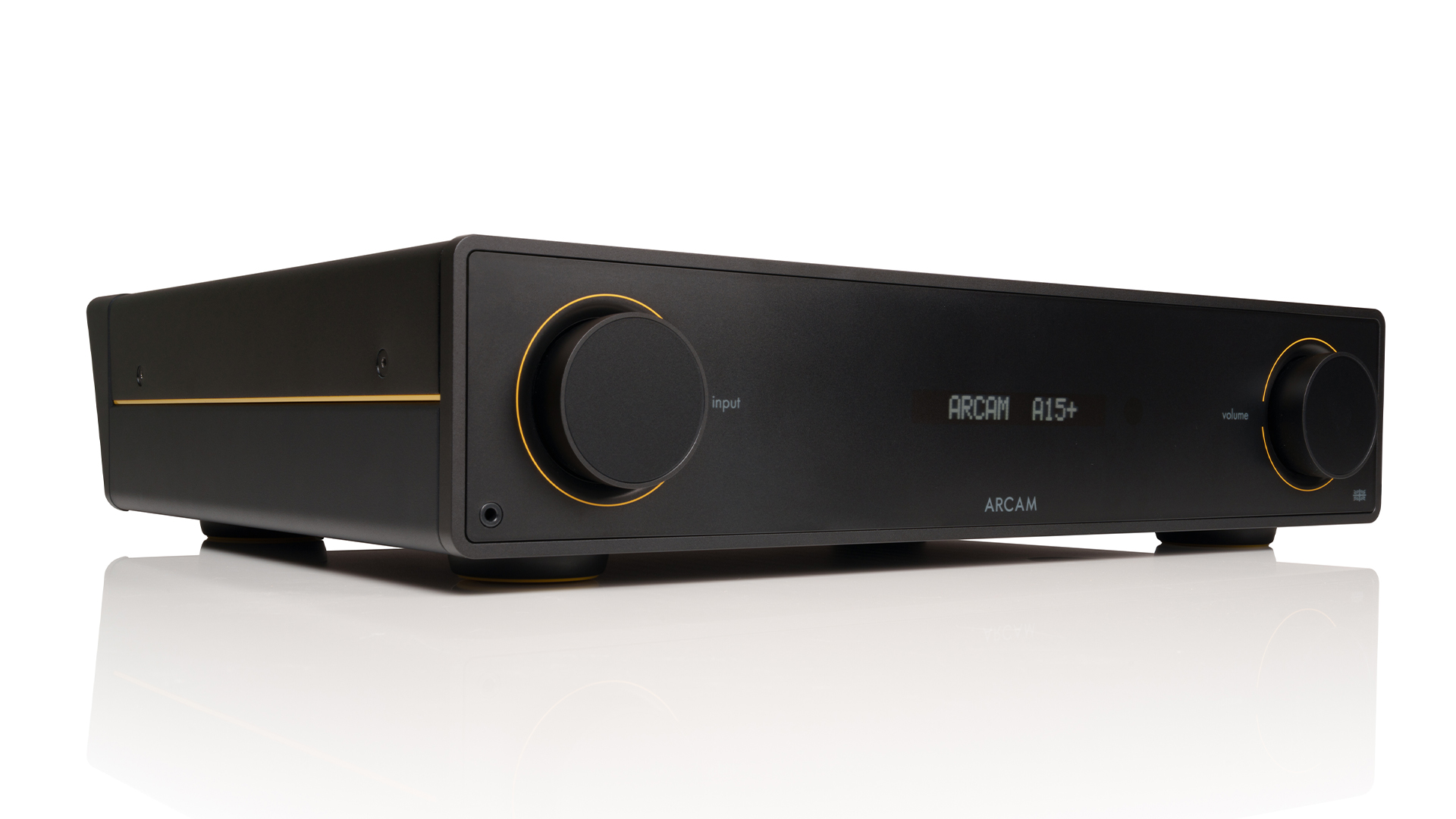
Type Integrated
Power 80W per channel
Phono stage? Yes (MM)
Inputs Line level x3, optical, coax x2, HDMI eARC
Outputs Pre-out
Bluetooth? Bluetooth 5.4 (two-way, aptX HD, aptX Lossless, Auracast)
Headphone output? Yes (3.5mm)
Dimensions (hwd) 9.8 x 43.1 x 34.4cm
Weight 10kg
This '+' version remains a well-equipped amplifier that should slot into pretty much any price-compatible stereo system with ease. It thoughtfully adds an HDMI eARC digital input alongside the previous generation's optical and a pair of coaxial inputs.
Fans of analogue aren’t ignored, with the original’s moving magnet phono input and trio of line-level analogue connections continuing. As before, there is a preamp output for those who want to upgrade and a 3.5mm headphone socket on the front.
The latest hi-fi, home cinema and tech news, reviews, buying advice and deals, direct to your inbox.
Two-way Bluetooth is still on the menu, but in one of the more significant upgrades, it is now Version 5.4 with Auracast (allows one-to-many transmission without the need for pairing) and adds support for Snapdragon Sound, which is essentially a suite of technologies designed to get the best from the wireless transmission method.
As far as the basics of the digital module go, nothing of significance has changed. A 24-bit/192kHz compatible ESS ES9018 DAC chip sits at the heart, and there still isn’t a USB input on this model.
While adding the new Bluetooth module, Arcam’s engineers took the opportunity to do some housekeeping on the A15’s power supply circuitry, improving the mains transformer and various components, to cut interference and reduce power supply impedance. Small touches like automatically powering down the DAC board when the analogue inputs are selected are claimed to deliver sonic improvements too.
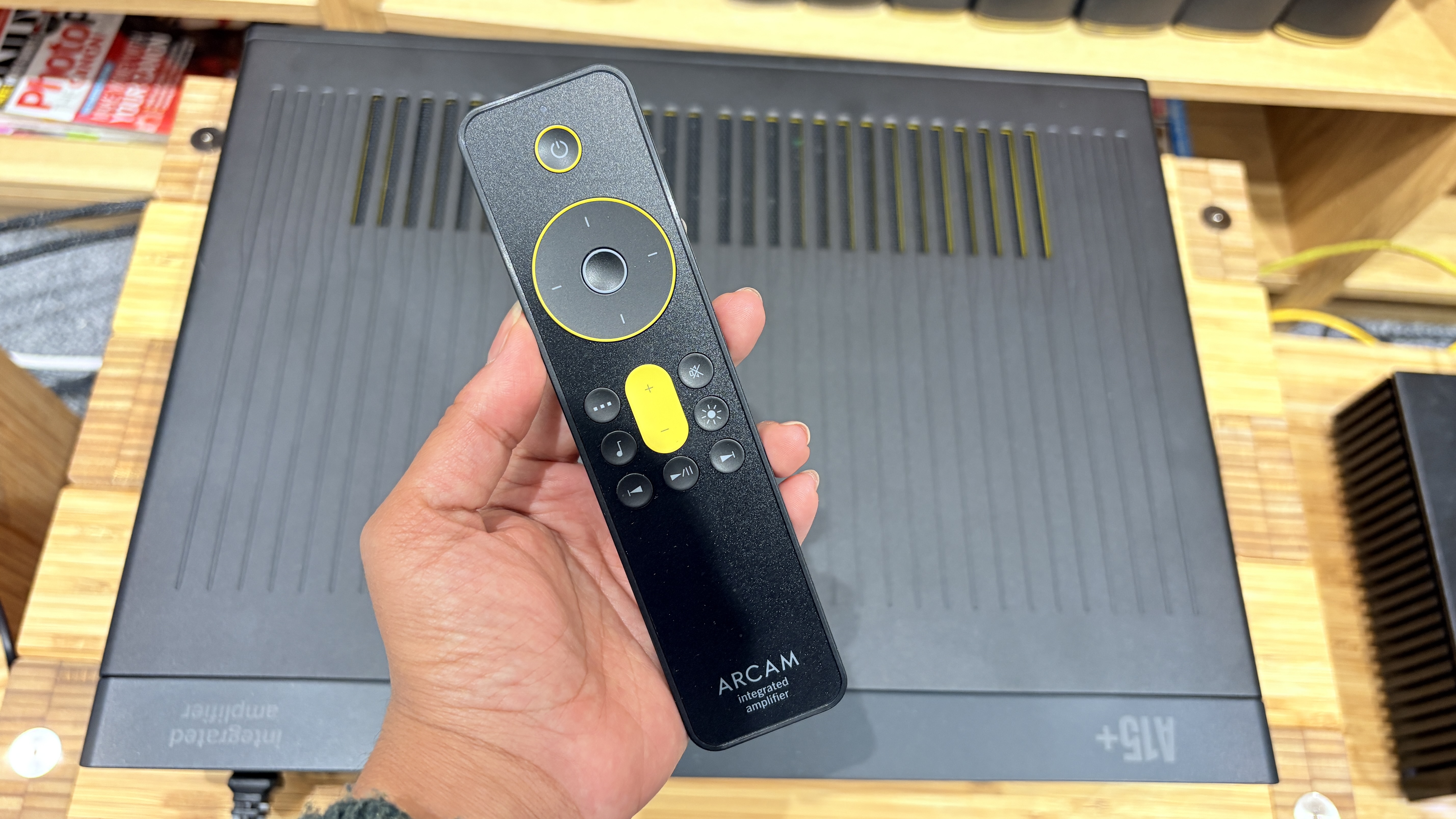
Straight from the box, the A15+ will autoswitch to the HDMI or the Bluetooth inputs if it detects a signal. Most people will be happy with such a convenient arrangement, but the engineers found that the sound becomes just a touch cleaner and clearer if that autoswitching functionality is turned off, and now allow users to do so.
If you are trying to optimise the A15+’s performance, this is something well worth doing. The improvement in clarity is subtle but worthwhile. The (small) downside is that now those inputs have to be selected manually.
Compatibility
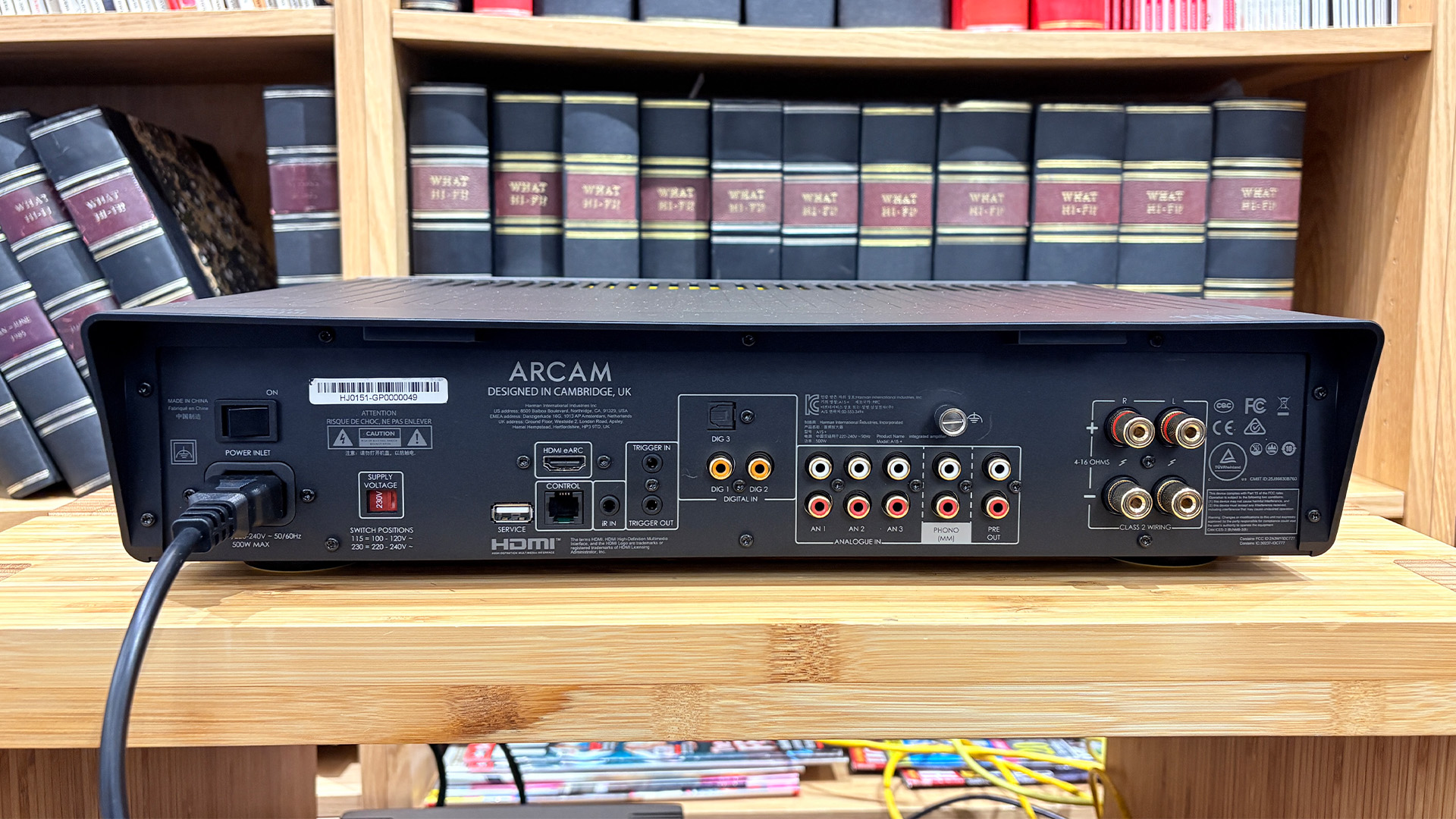
An amplifier at this price level has quite a wide remit. It has to be able to be forgiving enough to perform with good-quality budget sources and speakers while still being transparent enough to shine when partnered with more capable components.
The A15+ ticks both boxes. Our ideal starting point would include sources such as the Rega Planar 3/Nd3 record player, the Arcam CD5 CD player or Cambridge Audio CXN100 streamer, and partnering speakers like Acoustic Energy AE300 Mk2 or KEF Q3 Meta.
But, as we find out during our test sessions, this is an amplifier that is perfectly capable of making the most of more ambitious partners, right up to the likes of the Cyrus 40 ST music streamer and the Fyne Audio F502S floorstanders.
Sound
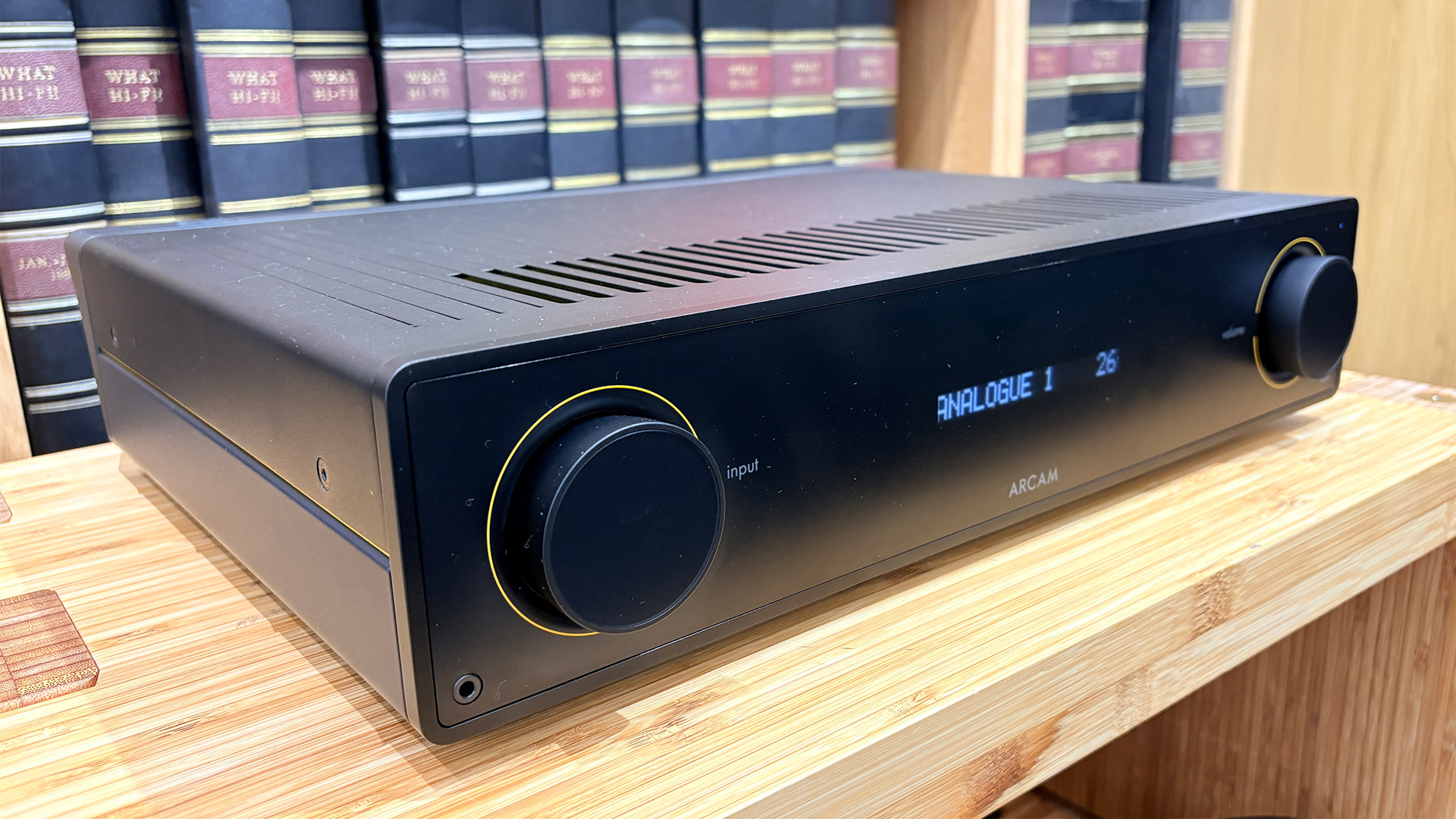
The original A15 was a superb all-rounder, delivering a combination of detail, dynamics and overall balance that we felt was class-leading. This new + version retains that character but takes small steps forward across the board.
We have the original on hand and listen to both amplifiers in a wide range of systems from the price-comparable sources and speakers we’ve already mentioned, right up to our high-end reference system of Naim ND555/555 PS DR and ATC SCM50. It doesn’t take long to decide that we prefer the new one.
We play Gorecki’s emotionally-charged Symphony No.3 and find that the A15+ sounds that bit cleaner and clearer. We can hear more in the way of instrumental textures and the kind of low-level acoustic detail that defines the size of the recording venue.
The + version has more expressive dynamics and seems to go from quiet to loud with greater fluency. We don’t note any significant difference in scale or absolute authority, but do find that the newer amplifier is more emphatic in the way it renders crescendos and shifts in musical intensity.
There aren’t any notable changes in terms of tonality, which remains a well-judged balance of evenness with just enough smoothness for the amplifier to remain enjoyable with rough or coarse recordings. The A15+ has the transparency to reveal flaws in a recording or partnering source, but it won’t go out of its way to emphasise those shortcomings. This is arguably the ideal balance for something at this level, we think.
Stereo imaging remains good. The soundstage is relatively wide, well-focused and displays a pleasing amount of depth (provided it’s in the recording, of course). We have no complaints about the image stability or the sense of space around each instrument.
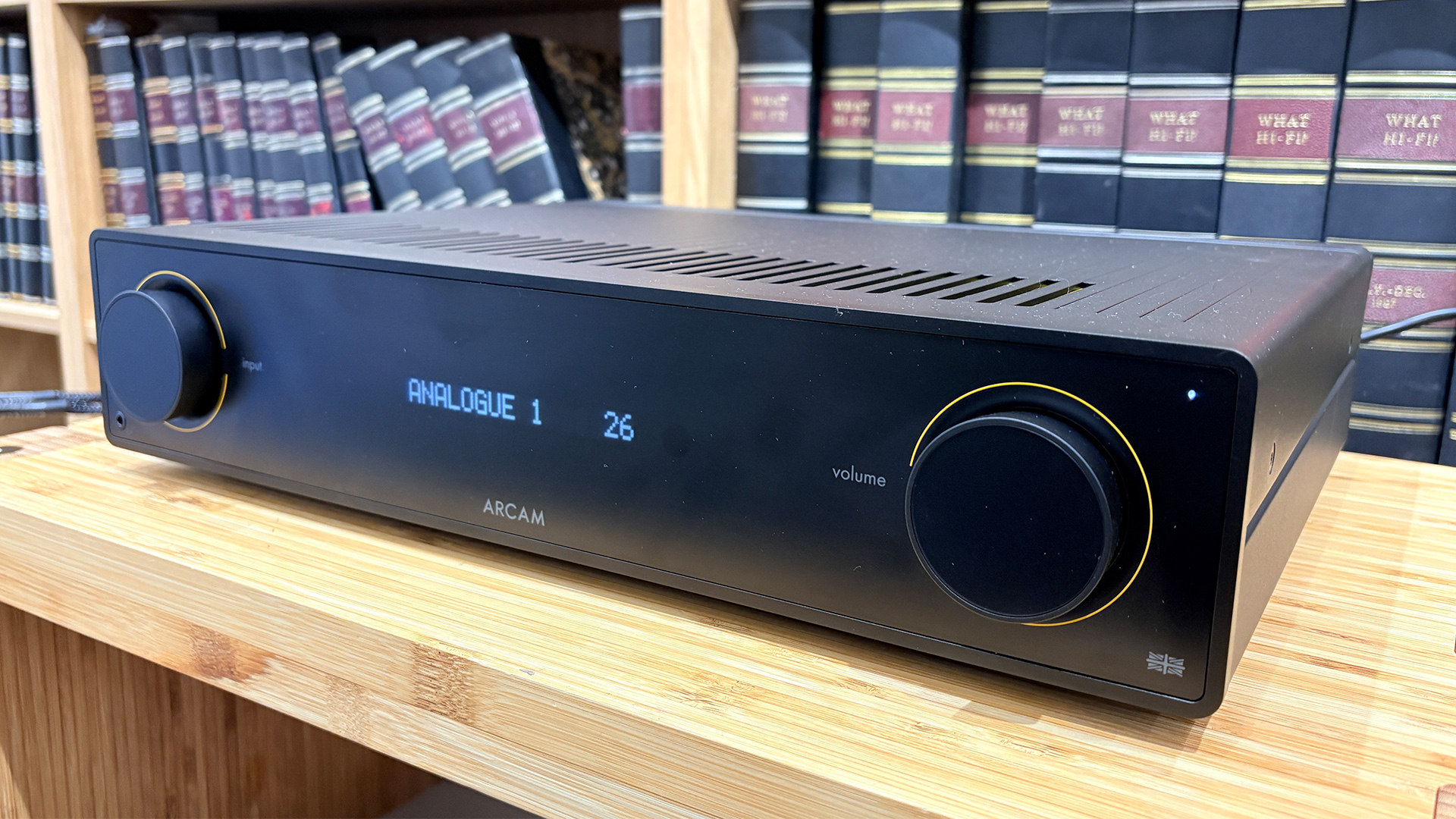
This Arcam knows how to dance, too. It proves to have a surefooted sense of rhythm when we play Michael Jackson’s hard-charging Jam, and delivers the song’s full-throttle momentum with considerable verve. We are impressed with the way this amplifier organises detail and its composure when things get demanding.
This amplifier may kick hard in the bass, but it also retains a degree of tunefulness and agility that is rare to find at this level. Basslines are meaty yet retain a lovely flow. Importantly, the lows never feel overbearing or musclebound.
We are pleased to report that the on-board DAC module is a good one. The ESS 9018 chip may not be the most fashionable around, but it serves well here, helping the A15+ to retain a good sense of energy and expression regardless of the digital input we use. There are no issues when we switch between files of different resolutions up to the 24-bit/192kHz limit. As before, DSD replay is not on the menu, but that’s not a deal breaker for us.
The A15+’s performance with Bluetooth is solid. While this would never be our connection of choice if performance were a priority, it remains a useful addition that works well in this amplifier. The Arcam’s sound via Bluetooth has enough in the way of energy and organisation to remain enjoyable.
Interested in playing vinyl? We connect our reference Technics SL-1000R/Nagaoka MP-200 record player and the A15+’s phono section proves to be suitably detailed and enjoyable. Hum and hiss levels are decently low for a product such as this, while dynamics and rhythmic drive mirror the standards we hear through the line inputs.
We would only consider upgrading to an outboard phono stage if using something more ambitious than a Rega Planar 3. For most users, the phono module in the Arcam will do just fine.
Verdict
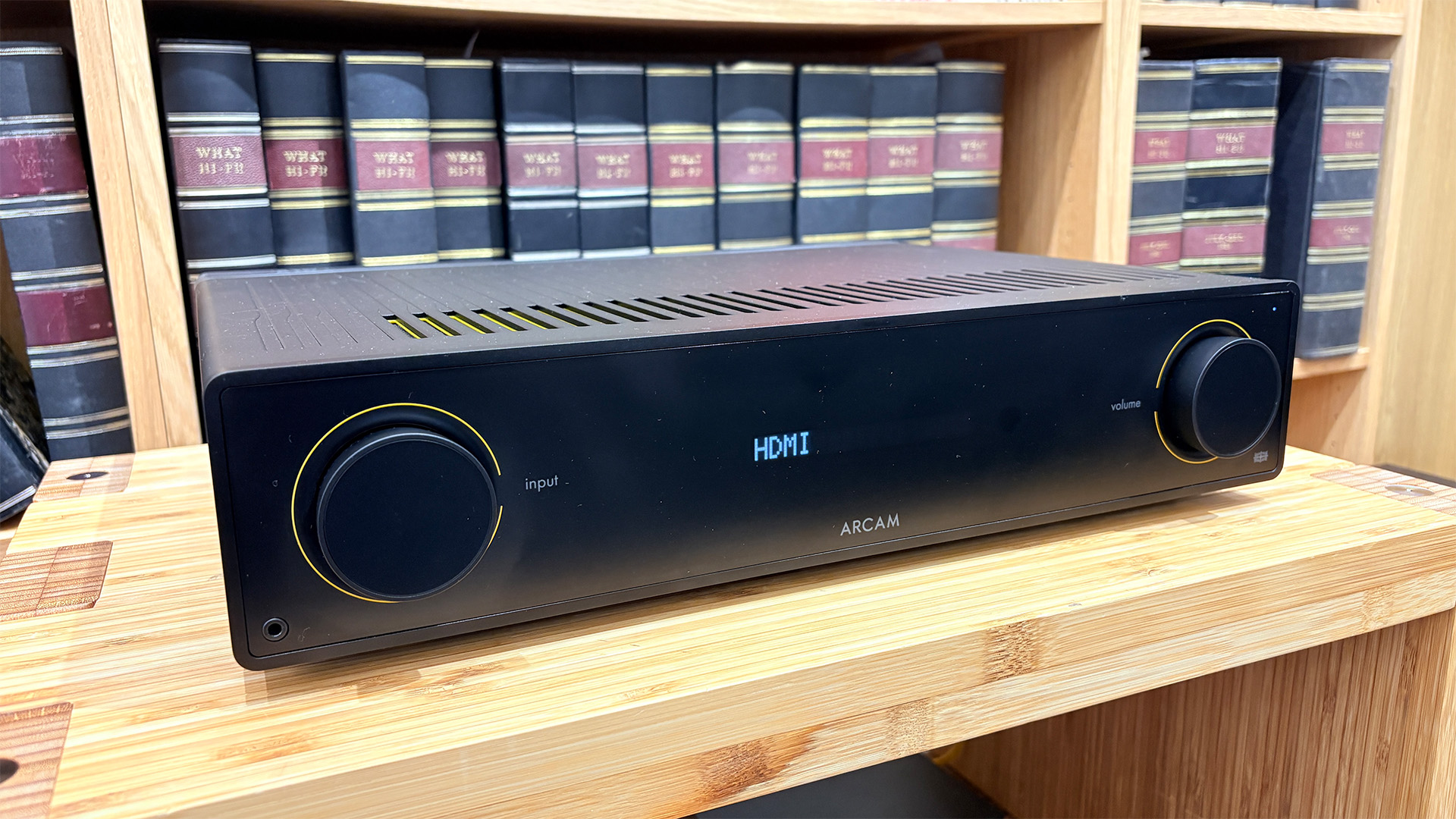
We’ve always admired the A15’s wide-ranging talents. It is sensibly specified and highly accommodating as far as system matching is concerned. Most of all, it is a musical treat that works well across every musical genre we’ve tried.
If you are looking for an amplifier that ticks all the boxes at this price, we haven’t come across a better one than the Arcam A15+.
Review published: 3rd October 2025
SCORES
- Sound 5
- Build 4
- Features 5
MORE:
Read our review of the Rega Elex Mk4
Also consider the Arcam A5+
Best stereo amplifiers: 9 class leaders chosen by our review experts

Ketan Bharadia is the Technical Editor of What Hi-Fi? He has been reviewing hi-fi, TV and home cinema equipment for almost three decades and has covered thousands of products over that time. Ketan works across the What Hi-Fi? brand including the website and magazine. His background is based in electronic and mechanical engineering.
You must confirm your public display name before commenting
Please logout and then login again, you will then be prompted to enter your display name.
